When it comes to teaching reading and spelling, there are three terms that are used often: phonological awareness, phonemic awareness, and phonics.
But what do they mean? How are they the same? How are they different? Do I really need to know the difference? How do you teach each one?
Such great questions! Let’s explore together.
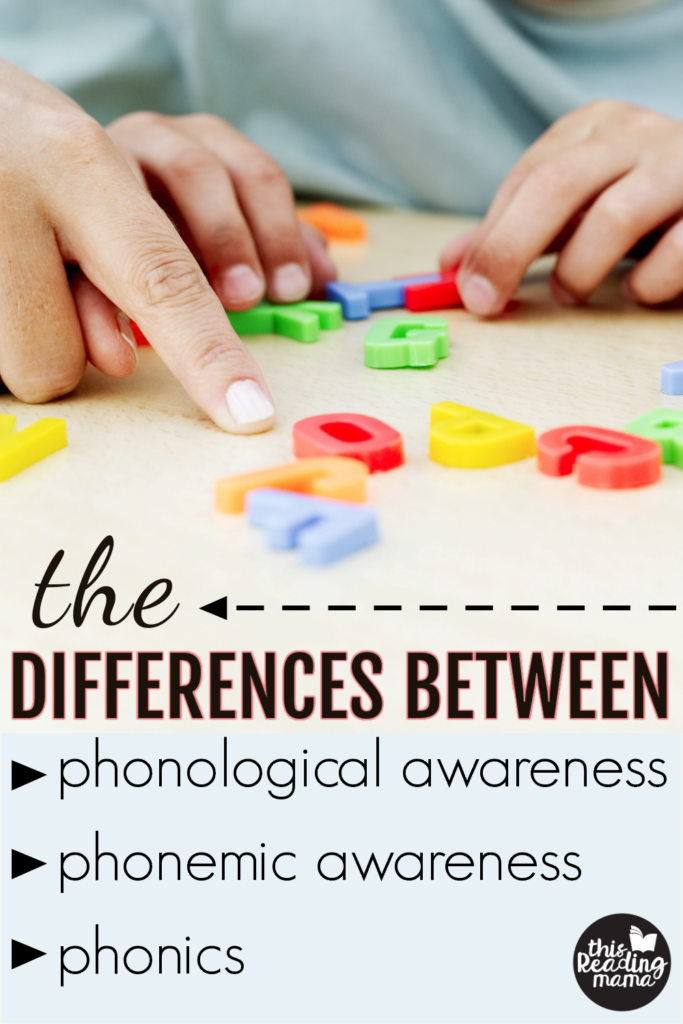
The Differences Between Phonological Awareness, Phonemic Awareness, & Phonics
While these words all are interrelated and important when it comes to reading and spelling, they aren’t all exactly the same thing. If you teach a child in any capacity, it’s important for you to know the differences and the huge impact they each have on helping our learners read and spell.
Please note that each of these skills need to be explicitly taught to our learners. We can’t just assume that our kids will “get it.”
The good news is they can be taught with VERY SIMPLE supplies, like pennies or dot paint. If you’re looking for pictures that can help you teach these skills, the links I’m sharing to blog posts contain free printables you can print off and use!
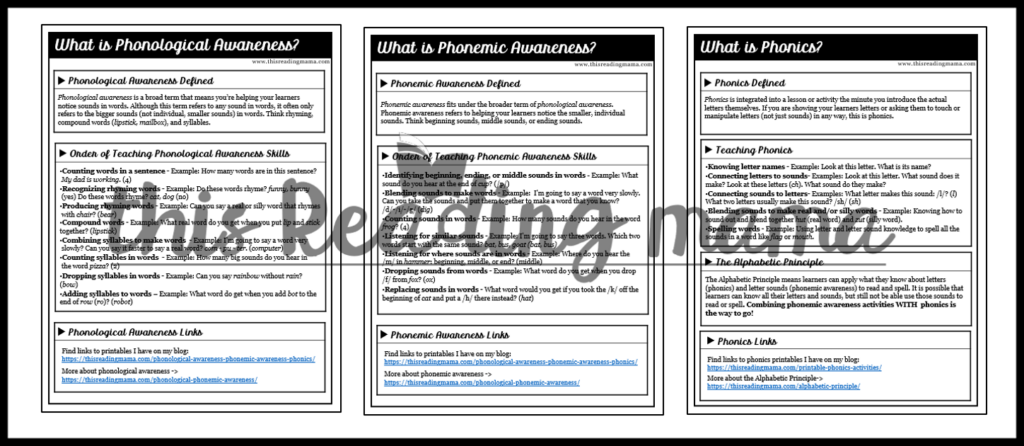
Look for the teal download button at the end of this post,
so you can download these simple, quick reference charts.
What is Phonological Awareness?
Phonological awareness is a broad term in which you’re helping your learners notice sounds in words. Although this term refers to any sound in words, this term often only refers to the bigger sounds {not individual, smaller sounds} in words.
Think rhyming, syllables, and compound words.
Teaching Phonological Awareness
Here are some activities that work on phonological awareness*:
- Counting words in a sentence – Example: How many words are in this sentence? My dad is working. (4)
- Recognizing rhyming words – Example: Do these words rhyme? funny, bunny (yes) Do these words rhyme? cat, dog (no)
- Producing rhyming words – Example: Can you say a real or silly word that rhymes with chair? (bear)
- Compound words – Example: What real word do you get when you put lip and stick together? (lipstick)
- Combining syllables to make words – Example: I’m going to say a word very slowly? Can you say it faster to say a real word? com – pu – ter. (computer)
- Counting syllables in words – Example: How many big sounds do you hear in the word pizza? (2)
- Dropping syllables in words – Example: Can you say rainbow without rain? (bow)
- Adding syllables to words – Example: What word do get when you add bot to the end of row (ro)? (robot)
*I once thought all these skills were mainly pre-reading skills, but they have a lot to do with reading and spelling! For example, being able to break a word like computer down into its syllables is vital for spellers to capture all the sounds in each syllable. This can help them identify each syllable type to spell the word correctly syllable by syllable.
There are many other examples I could give as to how these skills help, but just know that they aren’t skills only for preschoolers!
Links for Teaching Phonological Awareness:
- I Can Rhyme Rhyming Wheels
- Rhyme Time Game Boards
- Write the Room Rhyming Words
- Syllable Counting Cards
- Blending Syllables Activity
- Compound Words Pack
What is Phonemic Awareness?
Phonemic awareness fits under the broader term of phonological awareness. It refers to helping your learners notice the smaller, individual sounds in words.
Teaching Phonemic Awareness
Here are some activities that teach phonemic awareness**:
- Identifying beginning, ending, or middle sounds in words – Example: What sound do you hear at the end of cup? (/p/)
- Blending sounds to make words – Example: I’m going to say a word very slowly. Can you take the sounds and put them together to make a word that you know? /d/-/i/-/g/ (dig)
- Counting sounds in words – Example: How many sounds do you hear in the word frog? (4)
- Listening for similar sounds – Example: I’m going to say three words. Which two words start with the same sound? bat, bus, goat (bat, bus)
- Listening for where sounds are in words – Example: Where do you hear the /m/ in hammer: beginning, middle, or end? (middle)
- Dropping sounds from words – Example: What word do you get when you drop /f/ from fox? (ox)
- Replacing sounds in words – What word would you get if you took the /k/ off the beginning of cat and put a /h/ there instead? (hat)
**Once again, these are NOT just preschool or pre-reading skills. These skills are used even by proficient readers.
Links for Teaching Phonemic Awareness
- Phoneme Counting Cards
- Dot the Phonemes {counting phonemes}
- Build-a-Flower Letter Sounds
- Phonemic Awareness Cards for s-blends
- Phonemic Awareness Dot Pages
Read even more about phonological and phonemic awareness here.
What is Phonics?
Phonics is integrated into a lesson or activity the minute you introduce the actual letters themselves. If you are showing your learners letters or asking them to touch or manipulate letters (not just letter sounds) in any way, this is phonics. In other words, whenever you combine letters with their sounds, you have phonics.
Examples:
1. Phonemic awareness only: “Tell me the sound you hear at the beginning of ball.” In this example, I’m expecting the child to say, “/b/,” (the sound of b.) This is phonemic awareness because letter names are never involved.
2. Phonics + Phonemic awareness: “I have three letters on the table: t, b, and m. Touch the letter that makes the sound you hear at the beginning of ball.” Now, I’ve introduced phonics into this example because we have physical letters involved.
I highly recommend combining phonemic awareness and phonics in every lesson you can. In other words, get letters involved in your phonemic awareness lessons as often as possible. Why? Three words: The alphabetic principle.
Just because your learners know their letters and sounds DOES NOT mean they will automatically be able to apply these skills to real reading and writing. Combining phonemic awareness activities WITH letters helps learners build the connection between the two.
You can read more about the alphabetic principle here.
Teaching Phonics
Here are some activities that teach phonics:
- Knowing letter names – Example: Look at this letter. What is its name?
- Connecting letters to sounds – Examples: Look at this letter. What sound does it make? Look at these letters (ch). What sound do they make?
- Connecting sounds to letters – Examples: What letter makes this sound: /l/? (l) What two letters usually make this sound? /sh/ (sh)
- Blending sounds to make real and/or silly words (decoding) – Example: Knowing how to sound out and blend together hut (real word) and zut (silly word).
- Spelling words (encoding) – Example: Using letter and letter sound knowledge to spell all the sounds in a word like flag or mouth.
Links for Teaching Phonics
- FREE ABC Packs
- Blending CVC Words
- Blending Sounds – CVC Dot Pages
- Printable Phonics Activities
- Tips for Teaching Letters and Letter Sounds
Download the free printable charts by clicking below:
Enjoy teaching!
~Becky
*I am a participant in the Amazon Services LLC Associates Program, an affiliate advertising program designed to provide a means for me to earn fees by linking to Amazon.com and affiliated sites.
If you’d like to read more about this subject, I highly recommend the book, Shifting the Balance by Jan Burkins.
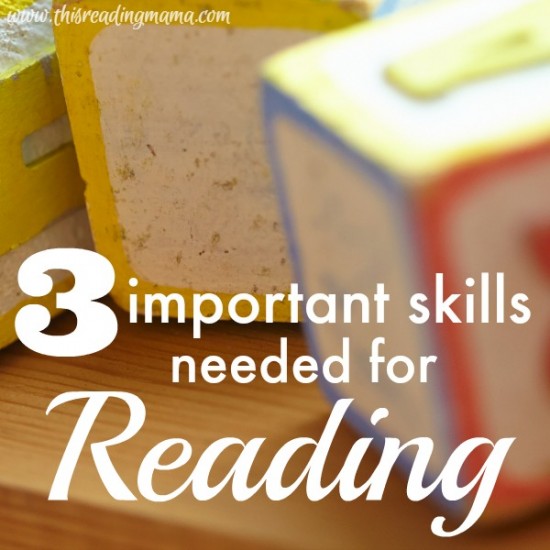

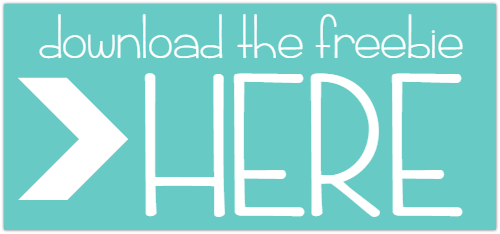
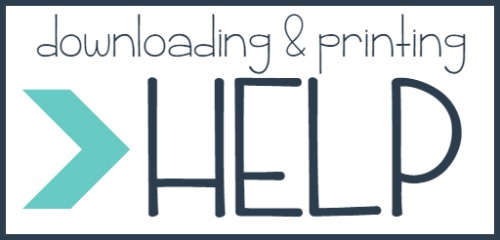
I love your blog posts and I recommend them often to parents and Adult learners! Thank you so much for all you have done over the years for struggling readers and those who want to teach them effectively and efficiently! ❤️
Thank you Becky this was really helpful.